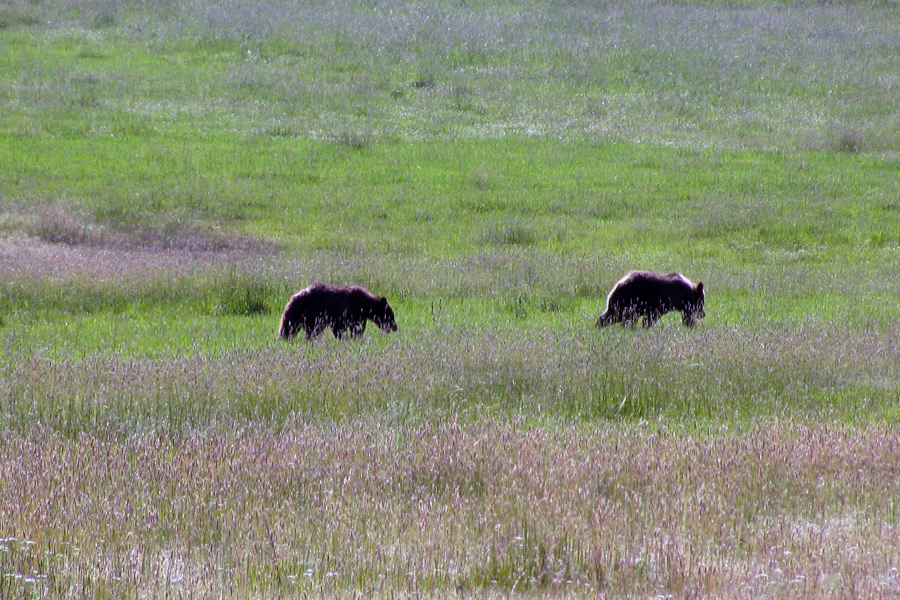The complicated quest to manage Montana’s grizzly bear population will be influenced to some degree by a newly minted citizen advisory council that Gov. Steve Bullock announced he is establishing in an effort to help initiate and steer a statewide discussion about the conservation, recovery and future management of the species.
The Grizzly Bear Advisory Council will be selected through an application process that ends April 12.
Grizzlies in the Lower 48 are federally protected as a threatened species, but their management would revert to state control if those protections are lifted. A critical part of the recovery strategy crafted by the U.S. Fish and Wildlife Service (USFWS) established six distinct recovery zones in Montana, Wyoming, Idaho, and Washington.
The largest recovery zone in terms of distinct population segments of grizzlies is the Northern Continental Divide Ecosystem, a sprawling region situated in Northwest Montana that includes Glacier National Park and portions of two Indian reservations, five national forests and four wilderness areas, and is home to an estimated 1,000 bears. The Greater Yellowstone Ecosystem in Montana, Wyoming and Idaho around Yellowstone National Park has an estimated 750 grizzlies.
“The recovery of grizzly bears in the Northern Continental Divide and Greater Yellowstone ecosystems is a great conservation success. Still, official federal delisting has yet to come to fruition,” Bullock wrote in a memo to Montana Fish, Wildlife and Parks (FWP) Director Martha Williams.
Efforts to delist some population segments have been stymied by lawsuits, particularly as other population segments remain much smaller and disconnected, creating what Bullock termed a leadership void.
The Bitterroot Ecosystem straddling the Montana-Idaho border, for example, does not yet have any resident grizzly bears, and only a few bears have been recorded in the North Cascades Ecosystem in Washington. The Selkirk Ecosystem in north Idaho and the Cabinet-Yaak Ecosystem in Northwest Montana each have an estimated 50 to 60 grizzlies.
Efforts by federal officials to delist the Yellowstone grizzlies stalled last September, when a federal judge in Missoula reversed a U.S. Interior Department decision that would have allowed hunting of the animals in areas around Yellowstone National Park.
FWS officials had hoped to start removing Northern Continental Divide Ecosystem grizzly bears from the endangered species list this year, a move that would also allow people to hunt the animals. However, according to FWS bear recovery coordinator Hilary Cooley, those efforts are now on hold because of the ongoing litigation over delisting grizzly bears in the Greater Yellowstone Ecosystem.
Those challenges and others prompted Bullock to move forward with an advisory council of diverse stakeholders to help guide the discussion.
“Legal uncertainty has created a void requiring our leadership,” Bullock wrote in the memo to Williams. “As bears continue to expand in numbers and habitat, we must identify durable and inclusive strategies to address current issues and prepare for the future. This advisory council represents a key step toward Montana embracing the tremendous responsibility and opportunity of long-term Grizzly Bear recovery and management.”
As grizzly bear populations continue to expand, in some cases into areas they have not occupied for decades, management challenges and conflicts have increased.
“FWP, along with partner agencies such as the U.S. Department of Agriculture Wildlife Services and the FWS, work together to respond to conflicts as they occur,” Bullock stated in the memo. “However, the situation has become increasingly complex as bears move into areas of Montana outside of existing recovery zones, such as the Big Hole Valley, Little Belt Mountains, and the plains east of the Rocky Mountain Front.”
Developing strategies to ensure a timely and appropriate response to these conflicts and addressing the needs of communities and landowners most impacted in these areas are key priorities identified for the advisory council’s deliberations.
“We’re excited to work with this advisory council, and we see this as a great opportunity to find a way forward that reflects the values and needs of Montana as it relates to grizzly bear management,” Williams said. “A council that is inclusive in its composition will allow for the balanced discussion we need to have.”
The Grizzly Bear Advisory Council will be tasked with considering broad strategic objectives, such as: maintaining and enhancing human safety; ensuring a healthy and sustainable grizzly bear population; improving timely and effective response to conflicts involving grizzly bears; engaging all partners in grizzly-related outreach and conflict prevention; and improving intergovernmental, interagency and tribal coordination.
The advisory council will consist of between 12 and 16 members who will focus on providing recommendations to the governor’s office, FWP, and the Fish and Wildlife Commission. It will consider several pressing issues, including bear distribution, connectivity between ecosystems, conflict prevention, response protocols, outreach and education, and the role of hunting and necessary resources for long-term population sustainability.
To accomplish that, Bullock is “looking for a broad cross-section of interests to serve on the Council, including livestock producers, wildlife enthusiasts, conservation groups, hunters, community leaders, Tribal Nation representatives and outdoor industry professionals.”
In 2000, former Montana Gov. Marc Racicot appointed the Montana Wolf Management Advisory Council, a broad-based stakeholder committee that was responsible for guiding the development of the state’s wolf-management plan.
For more information on how to apply, visit fwp.mt.gov/fishAndWildlife/species/grizzlyBear/default.html.
